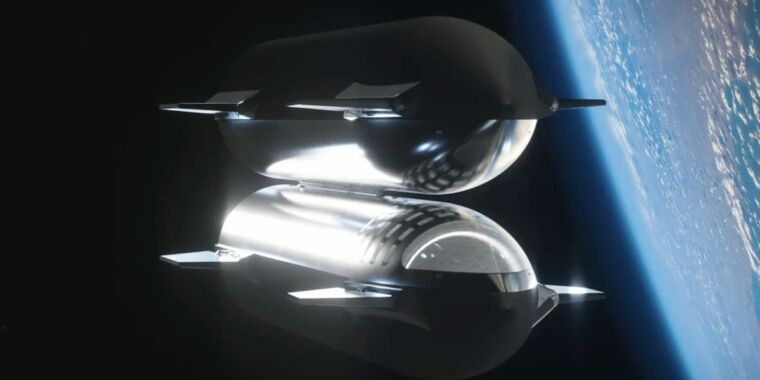So how does the ship needing prop ever get full if no pumps are used?
Sustained pressure differential. The receiving tank will continue to vent boiloff in order to keep its tanks at low pressure. Meanwhile, the sending tank will continue to boil propellant to keep its tanks at high pressure.
They could pressurize the sending tank via a number of different techniques, including any combination of these:
1. Passively, with the sending ship in the sun and the receiving ship in the shade
2. Actively, by tapping a methalox settling thruster for hot gas
3. Actively, by using electric heaters.
I have no idea what the practical limit for the pressure differential might be. The difficult part on the receiving side is making sure that your vents only vent gas. Keeping the receiving tanks cold, and limiting boil, would be a huge win.
Tapping a methalox settling thruster seems the most natural choice because it allows for nice synergy; it has to be firing for the duration of the transfer, and the pressure on the sending tanks has to be kept high for the duration of the transfer. We know that SpaceX has worked on methalox thrusters, but they may be very simple affairs, without the ability to provide that hot gas. Would they build a full flow staged combustion thruster that kicks out on the order of 10 tons of thrust? It would be a mini-Raptor.
The idea being this maximizes the time where an error won't produce a collision, and makes the "head on" scenario of a shorter duration?
That's the thinking. It also means that the exhaust from the approaching vehicle's thrusters aren't directly impinging on the target vehicle. There would still be some splash as the exhaust expands widely in vacuum.
Tangential is a coast towards a smaller target, or a smaller coast towards the same sized target?
Tangential doesn't have to do with the size of who is moving. It has to do with whether the approaching vehicle would strike the target vehicle if it didn't alter its path. If I set up an approach at some speed and then never adjust my line, but miss the target, then that's a tangential approach. If I hit the target, then it's a collision approach. Everyone seems to use a collision approach.
It may be considered more practical because it doesn't require both vehicles to be designed to allow this "slide past" thing. Each has to have the docking side clear of any projections that would hit the other vehicle when approaching or, in the case of a failure, sliding past. The technique only has to allow for a corridor, but it's obviously less demanding from a geometric design standpoint to allow a ship to nose straight in with its docking port.



